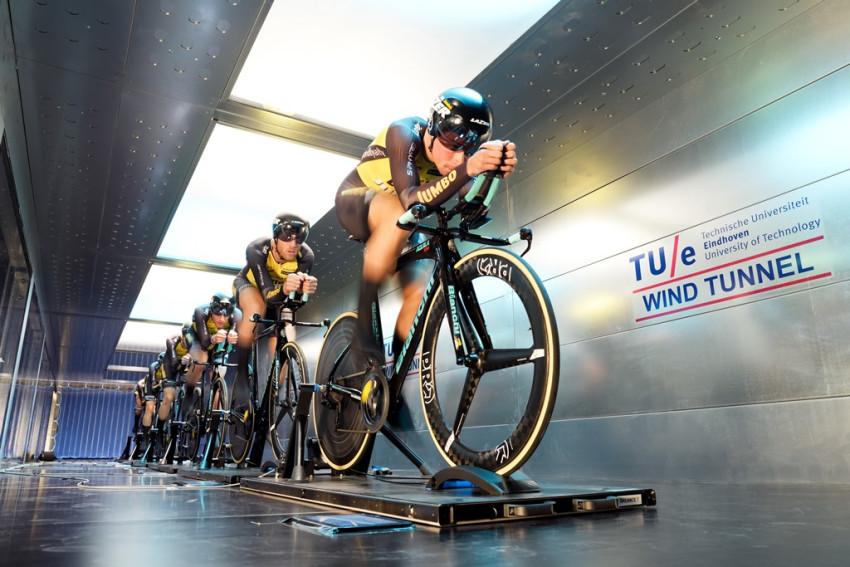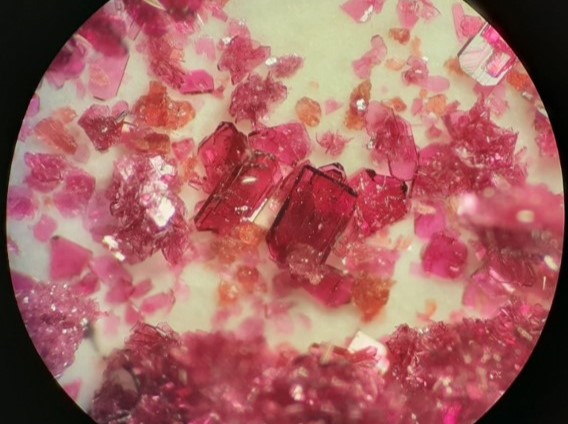
Eindhoven University of Technology opens long wind tunnel
This week a new wind tunnel was opened at the Eindhoven University of Technology (TU/e), with an extraordinarily long test section. The test facility will be used for various purposes, ranging from the quest for the optimum formation of a cycling team, to measuring the mutual influence of wind turbines in large wind farms.
The wind tunnel has three unique properties. Firstly, it is the only atmospheric boundary layer wind tunnel at a Dutch university. This means that it can simulate the air stream in the air layer near the ground.
Secondly, the 27m test section is particularly long, with a cross-section of 3 x 2m, offering room for large scale models of wind farms for example, or the LottoNL-Jumbo cycling team, in their quest for the ideal team time trial sequence (see opening photo).
Mobile sensors
And finally, the measuring equipment itself is unusual. 'Most tunnels have only one force sensor which is often mounted in a fixed position. We've constructed nine sensors which can be moved freely about', explains Bert Blocken, Professor at the Department of the Built Environment of the university in Eindhoven and specialised in air streams around buildings and the sports world. This force sensor, comparable to a set of scales, measures the horizontal forces to which an object is subjected in the air stream. The accuracy of the measurements in the new tunnel is 0.001 N.

Fans
The air in the tunnel can reach speeds of up to 33 m/s, thanks to fans with a total capacity of 225 kW (see photo). The wind tunnel and measuring equipment cost more than 1.3 million Euros in total.
 ‘We've got plenty of fantastic projects scheduled, including the analysis of the robustness of ventilation systems in buildings where asbestos renovation is required’, says Blocken. 'But also the testing of spoilers for lorries, with the intention of reducing fuel consumption. In a wind tunnel, we can create a controlled environment; that's not possible outdoors, in the atmosphere.'
‘We've got plenty of fantastic projects scheduled, including the analysis of the robustness of ventilation systems in buildings where asbestos renovation is required’, says Blocken. 'But also the testing of spoilers for lorries, with the intention of reducing fuel consumption. In a wind tunnel, we can create a controlled environment; that's not possible outdoors, in the atmosphere.'
The new test facility will enable even better wind studies to be conducted in the urban, shipping, automotive, air-quality, sports and wind-energy sectors. Check out this video about the wind tunnel (source: De Kennis Van Nu) :
If you found this article interesting, subscribe for free to our weekly newsletter!
Photos: Eindhoven University of Technology / Bart van Overbeeke






